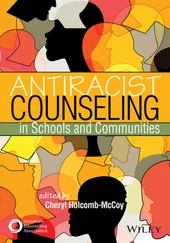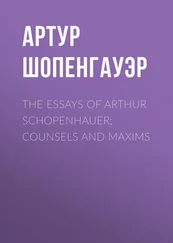Counseling and Psychotherapy
Здесь есть возможность читать онлайн «Counseling and Psychotherapy» — ознакомительный отрывок электронной книги совершенно бесплатно, а после прочтения отрывка купить полную версию. В некоторых случаях можно слушать аудио, скачать через торрент в формате fb2 и присутствует краткое содержание. Жанр: unrecognised, на английском языке. Описание произведения, (предисловие) а так же отзывы посетителей доступны на портале библиотеки ЛибКат.
- Название:Counseling and Psychotherapy
- Автор:
- Жанр:
- Год:неизвестен
- ISBN:нет данных
- Рейтинг книги:4 / 5. Голосов: 1
-
Избранное:Добавить в избранное
- Отзывы:
-
Ваша оценка:
- 80
- 1
- 2
- 3
- 4
- 5
Counseling and Psychotherapy: краткое содержание, описание и аннотация
Предлагаем к чтению аннотацию, описание, краткое содержание или предисловие (зависит от того, что написал сам автор книги «Counseling and Psychotherapy»). Если вы не нашли необходимую информацию о книге — напишите в комментариях, мы постараемся отыскать её.
Counseling and Psychotherapy — читать онлайн ознакомительный отрывок
Ниже представлен текст книги, разбитый по страницам. Система сохранения места последней прочитанной страницы, позволяет с удобством читать онлайн бесплатно книгу «Counseling and Psychotherapy», без необходимости каждый раз заново искать на чём Вы остановились. Поставьте закладку, и сможете в любой момент перейти на страницу, на которой закончили чтение.
Интервал:
Закладка:
Sidebar 3.3 Psychodynamic Interpersonal Therapy and Major Depressive Disorder
Psychodynamic interpersonal therapy is often used to treat major depressive disorder (MDD). This approach assumes that symptoms reflect a treatable illness that is not the client’s fault and that symptoms arise in an interpersonal context. When treating MDD, counselors frame the disorder in one of four interpersonal contexts: (a) grief (complicated bereavement), (b) a role dispute (struggle with a significant other that the client is invariably losing), (c) a role transition (any life change, such as a geographic move, the onset of medical illness, a marriage or divorce, starting or losing a job), or (d) interpersonal deficits (social isolation). The overall goal in treating MDD within this framework is to resolve the life crisis by helping clients build social skills, communicate their emotions more effectively, and mobilize protective social supports. Randomized controlled trials have provided evidence-based support for this method (Markowitz et al., 2014).
Supporting Research
Psychoanalysis in its classical form has limited current empirical support across contexts and populations and has evolved to meet the changing needs of managed care and community-based programs that emphasize productivity led by evidence-based practices. In its brief form, the efficacy of its techniques is equal to that of other mainstream counseling modalities such as the cognitive behavioral approach (Horvath, 2005; see Sidebar 3.4).
Derived from these techniques, psychodynamic psychotherapy is strongly clinically supported as effective with many diagnoses and populations (Shedler, 2010). Meta-analytic reviews of treatment outcome studies and randomized controlled trials support its efficacy for treating mood and anxiety disorders, somatoform disorders, and schizophrenia. This approach has also been compared with dialectical behavior therapy in its effectiveness and quality of treatment for borderline personality disorder (Seligman & Reichenberg, 2014). In the area of psychoanalytic and psychodynamic research, the trend toward evidence-based support is encouraging counselors to reexamine the use of traditional techniques based on significant results from randomized controlled trials, brain scans, and the measurable effects of talk therapies on behavior, brain activity, and brain function (Sonnenberg, 2011).
Originally intended as an explanation of the effects of childhood trauma in later life, psychoanalysis has evolved to include explanations of personality development and maladaptive behaviors resulting from disturbances in early relationships. Many counselors suggest that psychoanalysis can also be used to describe or explain a vast array of other concepts outside the realm of the psychological field and is a powerful model for understanding the role and impact of early childhood conflicts in clients’ lives. One of the greatest strengths of psychoanalytic theory is the breadth and depth of the explorations into personality development and coping skills, making it a comprehensive theory with much versatility in practical use.
This theory is especially useful in understanding the basis for resistances that may present as missing appointments, refusing to engage in introspection, and being reluctant to examine the use of defenses (Corey, 2021). From a psychoanalytic viewpoint, the client will bring to the session a consistent set of themes rich with content accumulated over their lifetime. And individually or in combination with other theories, psychoanalysis is a valuable tool that counselors may use to develop an effective treatment plan based on the symptoms and patterns of behaviors initially observed within a psychoanalytic framework. Katz-Bearnot (2009) suggested that the psychoanalytic orientation offers the most comprehensive approach to counseling because the theory considers unconscious factors, including transference, enactments, and aspects of the client’s personal relationships.
Sidebar 3.4 Psychoanalytic Psychotherapy and Eating Disorders
In Denmark and other European countries, psychoanalytic psychotherapy and associated techniques have been widely practiced as a treatment for eating disorders. In a 2014 randomized controlled trial comparing the efficacy of cognitive behavior therapy and interpersonal psychotherapy, researchers found that interpersonal psychotherapy is as effective as cognitive behavior therapy in reducing bingeing and purging through the facilitation of heightened affect tolerance and insight into the psychological function of the symptoms (Poulsen et al., 2014).
Limitations
There are several limitations with traditional psychoanalysis that led to the emergence of psychodynamic modalities. Whereas psychoanalysis has historically relied on the applications of case studies to demonstrate its usefulness, psychodynamic approaches have external reliability and evidence-based support.
Another limitation of traditional psychoanalysis is that its treatment is highly individualized, is lengthy in duration, and seeks to show how early childhood experiences have affected the formative aspects of one’s personality development. The treatment is prolonged and expensive; an analysis, or course of counseling, is estimated to require 5 years or more with four or five sessions per week. The time and expense involved with psychoanalysis make it prohibitive to many, and there are few practitioners of traditional psychoanalysis. This is because of the intensive training required and the limitations of coverage by health insurance and managed care. In contrast, a modern psychodynamic approach may be effectively applied in 10 to 12 sessions.
A strong criticism of psychoanalytic theory is its inherent exclusion of cultural paradigms owing to its strong focus on sexual development without consideration of the important contributions of cultural identity during early development. Contemporary psychodynamic approaches are now considering the influences of culture formation and identification in personality development, as well as the sociocultural implications in the formation of trauma. For example, psychoanalysis assumes that humans across cultures are conceptualized largely in terms of biological instincts and psychological drives, and maladaptive behaviors are symptomatic of a subconscious response to social interactions that the mind interprets as unsafe, thereby threatening the stability of the human personality structure. Within an evolved psychodynamic framework, however, culture is viewed as having defensive hierarchies that result in cultural patterns and ethnic characteristics. There is a commonality of defenses and conflicts that are both provided and facilitated by a particular culture, and concepts such as anxiety, depression, defense mechanisms, and dreams are present in people of all cultures (Lijtmaer, 2006). An assumption of this theory is that the modes of expression of these concepts may differ in diverse cultures (see Sidebar 3.5).
Sidebar 3.5 Culture and Hysteria
The evolution of the definition of hysteria led to the clinical conceptualization of somatoform, conversion, dissociative identity, and amnestic disorders. The diagnosis of these disorders is culture bound, and the fifth edition of the Diagnostic and Statistical Manual of Mental Disorders (American Psychiatric Association, 2013) addresses this directly in a distinct section, “Culture-Related Diagnostic Issues,” which helps counselors diagnose syndromes in an appropriate cultural context. For example, ataque de nervios comprises a constellation of symptoms that would have been analogous to a diagnosis of hysteria in 1890. In Hispanic culture, this is interpreted as an “intense emotional upset, including acute anxiety, anger, or grief; screaming and shouting uncontrollably; attacks of crying; trembling; heat in the chest rising into the head; and becoming verbally and physically aggressive” (p. 833) or otherwise feeling out of control.
Читать дальшеИнтервал:
Закладка:
Похожие книги на «Counseling and Psychotherapy»
Представляем Вашему вниманию похожие книги на «Counseling and Psychotherapy» списком для выбора. Мы отобрали схожую по названию и смыслу литературу в надежде предоставить читателям больше вариантов отыскать новые, интересные, ещё непрочитанные произведения.
Обсуждение, отзывы о книге «Counseling and Psychotherapy» и просто собственные мнения читателей. Оставьте ваши комментарии, напишите, что Вы думаете о произведении, его смысле или главных героях. Укажите что конкретно понравилось, а что нет, и почему Вы так считаете.












